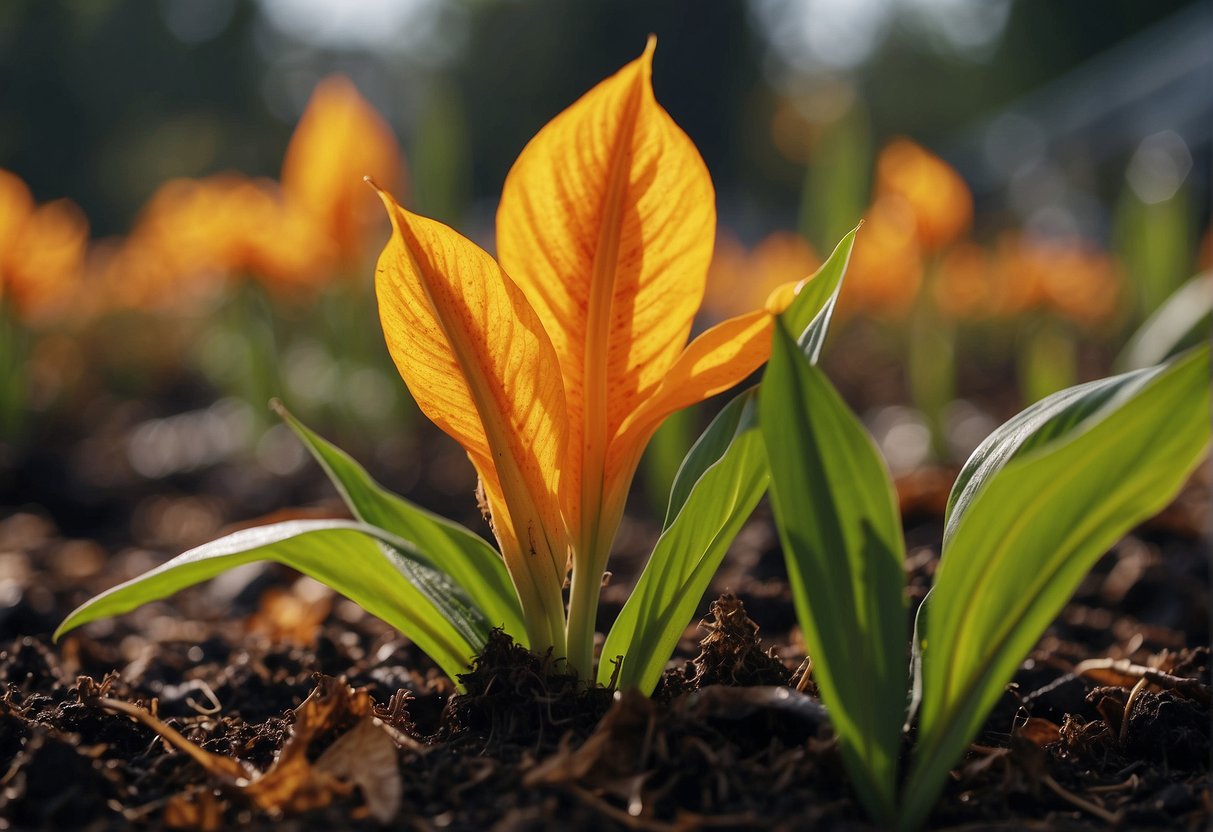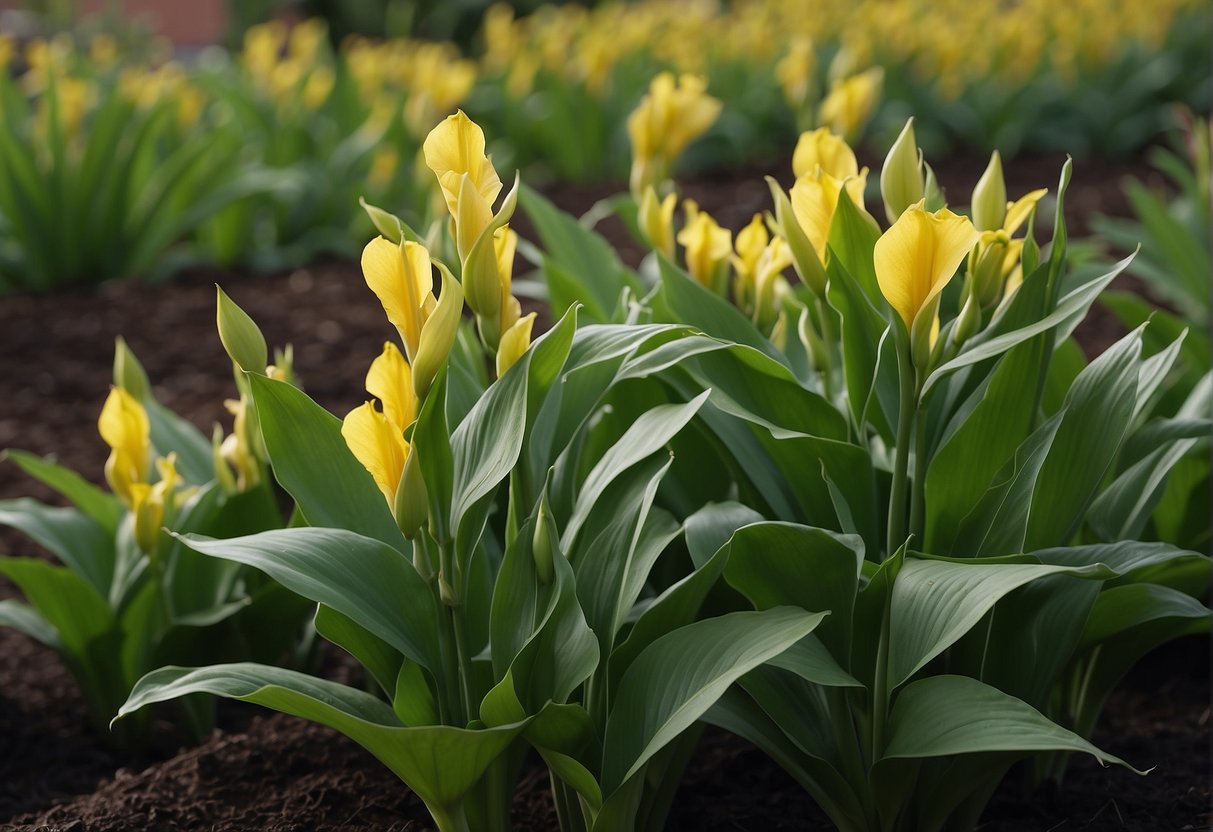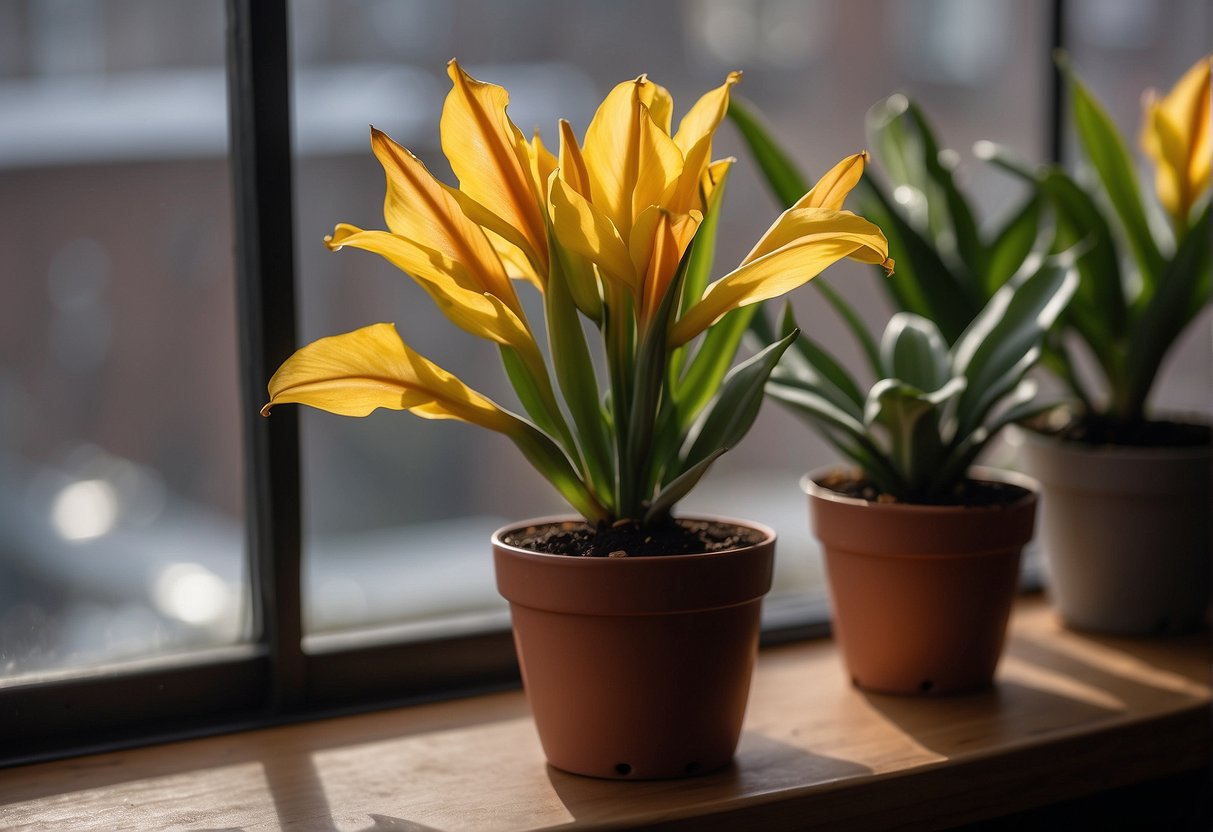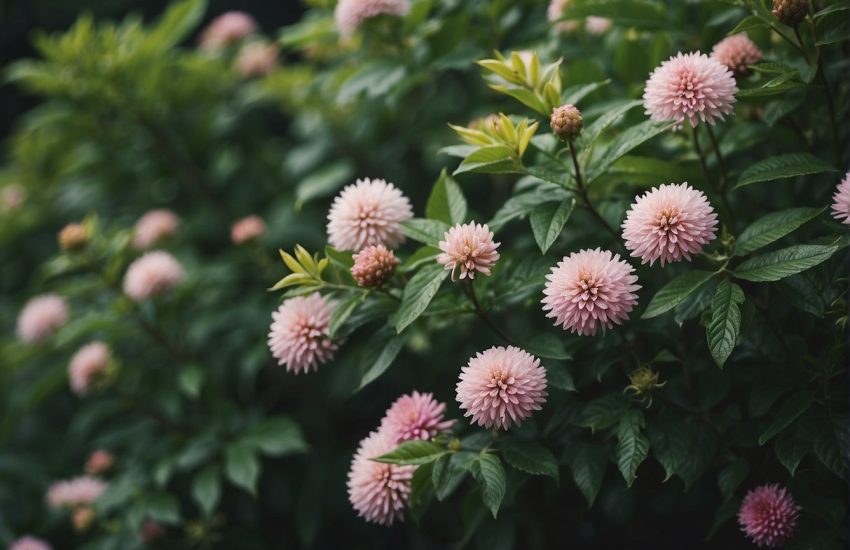Canna Lily Care for Winter: Tips and Tricks
Canna lilies, also known as Indian shot, are a popular garden plant with their vibrant foliage and showy flowers. However, these tropical plants are not cold hardy and require special care during the winter months. In this article, we will discuss the best practices for canna lily care during winter, including overwintering techniques.

To ensure the survival of canna lilies during winter, it is important to understand their needs. These plants require well-draining soil, plenty of sunlight, and regular watering during the growing season. However, as temperatures drop in the winter, canna lilies become dormant and require less water and sunlight. Overwatering or exposing them to freezing temperatures can cause damage or even death.
Overwintering canna lilies is a common practice among gardeners in colder climates. There are several methods to overwinter canna lilies, including digging up the bulbs and storing them indoors, mulching the plants heavily, or covering them with protective materials. Each method has its advantages and disadvantages, and the choice depends on the gardener’s preference and the climate in their area. By following the proper care techniques, gardeners can enjoy healthy and vibrant canna lilies year after year.
Preparing Cannas for Winter
Canna lilies are beautiful plants that can add color and vibrancy to any garden. However, they are not very cold-tolerant and need to be prepared for the winter months. Here are some steps to take to ensure your cannas survive the winter.
Pruning and Cleaning
Before winter sets in, it is important to prune and clean your cannas. Remove any dead or damaged foliage, as it can provide a home for pests and diseases. It is also a good idea to remove any spent flowers or seed pods, as they can drain energy from the plant.
Digging Up Rhizomes
If you live in an area where frost is common, it is best to dig up your cannas and store them indoors for the winter. To do this, use a shovel or garden fork to carefully dig up the rhizomes. Be sure to leave some soil around the roots to protect them.
Once you have dug up the rhizomes, shake off any excess soil and remove any dead foliage. Then, store the rhizomes in a cool, dry place, such as a garage or basement. You can also wrap them in newspaper or burlap to protect them from moisture and pests.
By following these simple steps, you can ensure that your cannas survive the winter and come back strong in the spring.
Overwintering Canna Lilies Indoors
Canna lilies are tender perennials that can be damaged or killed by frost. As such, they need to be overwintered indoors in colder regions to ensure their survival. Here are some tips on how to overwinter canna lilies indoors:
Storing in Containers
Before bringing canna lilies indoors, they should be dug up from the ground and stored in containers. Choose containers that are large enough to accommodate the rhizomes without crowding them. Make sure the containers have drainage holes to prevent waterlogging.
Fill the containers with a mixture of peat moss and vermiculite, and place the rhizomes in the mixture. Don’t water the rhizomes until new growth appears in the spring.
Maintaining Proper Conditions
Canna lilies need to be stored in a cool, dark, and dry place. A basement or garage is ideal for this purpose. The temperature should be between 40-50°F (4-10°C) and the humidity should be low.
To prevent the rhizomes from drying out, cover them with a layer of newspaper or cardboard. Check the rhizomes periodically to make sure they are not rotting or drying out.
In the spring, when new growth appears, gradually acclimate the canna lilies to brighter light and warmer temperatures. Water them regularly and fertilize them every two weeks with a balanced fertilizer.
By following these simple steps, you can successfully overwinter canna lilies indoors and enjoy their beauty year after year.
Caring for Cannas in Mild Winter Climates

Cannas are a beautiful addition to any garden and they can thrive in mild winter climates with proper care. Here are some tips for keeping your cannas healthy during the winter months.
Mulching Techniques
Mulching is an important aspect of caring for cannas during winter. A layer of mulch will help protect the plant’s roots from the cold and keep the soil moist. Apply a layer of mulch around the base of the plant, making sure to cover the ground around it. Use a good quality mulch such as compost, straw or shredded leaves. Avoid using fresh wood chips as they can rob the soil of nitrogen.
Watering and Feeding Schedule
Cannas require regular watering and feeding even during winter. Water the plants when the soil feels dry to the touch, but be careful not to overwater as this can lead to root rot. Feed the plants with a balanced fertilizer every 4-6 weeks to ensure they receive the necessary nutrients.
It is important to note that cannas may not require as much water or fertilizer during winter as they do during the growing season. Adjust the watering and feeding schedule accordingly based on the plant’s needs.
Overall, taking care of cannas during winter requires a little extra effort, but it is well worth it to keep these beautiful plants healthy and thriving. With proper mulching, watering and feeding, your cannas will be ready to bloom again come springtime.
Potted Canna Lily Winter Care

Canna lilies are tropical plants that thrive in warm weather and sunlight. However, during winter, these plants need a little extra care to survive indoors. Here are some tips for caring for potted canna lilies during winter:
Adjusting to Indoor Light
When bringing canna lilies indoors for the winter, it’s important to acclimate them to the lower light conditions gradually. Sudden changes in light can shock the plant and cause it to drop leaves or even die. Start by placing the plant in a partially shaded area for a few days before moving it to a spot with less light. If possible, place the plant near a south-facing window to provide as much natural light as possible.
Preventing Rot and Pests
Potted canna lilies are susceptible to rot and pests during the winter months. To prevent rot, make sure the pot has good drainage and don’t let the soil get too wet. Overwatering can lead to root rot, which is difficult to treat. To prevent pests, inspect the plant regularly for signs of infestation, such as yellowing leaves or sticky residue on the leaves. If you notice any pests, treat the plant with an insecticidal soap or neem oil.
In summary, caring for potted canna lilies during winter requires adjusting to indoor light and preventing rot and pests. By following these tips, you can help ensure your canna lilies survive the winter and thrive when spring arrives.
Replanting After Winter

Canna lilies are a great addition to any garden due to their vibrant blooms and lush foliage. However, in colder climates, it is important to take care of these plants during the winter months to ensure their survival. Once the winter has passed, it is time to assess the health of the rhizomes and replant them for another season of growth.
Assessing Rhizome Health
The first step in replanting canna lilies is to assess the health of the rhizomes. Rhizomes are the thick, underground stems that store nutrients for the plant. During the winter, these rhizomes can be damaged by cold temperatures or excess moisture. To check for damage, carefully dig up the rhizomes and inspect them for any signs of rot or mold. Healthy rhizomes should be firm and free of any soft spots or discoloration. If any rhizomes are damaged, they should be discarded to prevent the spread of disease.
Timing and Techniques for Planting
Once the rhizomes have been assessed, it is time to replant them. The timing of planting canna lilies in the spring will depend on the soil temperature and the hardiness zone. In general, canna lilies should be planted when the soil temperature has reached at least 60°F (15.5°C) and there is no longer a risk of frost.
To plant canna lilies, dig a hole that is slightly larger than the rhizome and fill it with well-draining soil. Place the rhizome in the hole with the growing points facing up and cover it with soil. Water the plant thoroughly and continue to water it regularly until it is established.
In conclusion, replanting canna lilies after winter requires careful assessment of the rhizome health and proper timing and techniques for planting. By following these steps, gardeners can enjoy the vibrant blooms and lush foliage of canna lilies for another season.
Frequently Asked Questions

How should I care for canna lilies indoors during the winter months?
Canna lilies can be grown indoors during the winter months, but they require a lot of light and warmth. Place them in a bright, sunny window and keep the temperature around 60-70°F. Water them sparingly, allowing the soil to dry out slightly between watering. Fertilize them every 4-6 weeks with a balanced fertilizer.
Is it necessary to dig up canna lilies before winter, or can they be left in the ground?
Canna lilies are sensitive to frost and should be dug up before the first frost of the season. They can be left in the ground in warmer climates, but it’s recommended to mulch heavily around the base of the plant to protect the roots from freezing temperatures.
What are the proper steps to overwinter canna lilies in pots?
To overwinter canna lilies in pots, first, cut back the foliage and allow the soil to dry out slightly. Then, move the pot to a cool, dark place, such as a basement or garage, where the temperature remains around 45-50°F. Water the plant sparingly, only when the soil is completely dry. In the spring, move the pot back to a sunny location and resume regular watering and fertilizing.
When can I expect my canna lilies to start growing again after winter?
Canna lilies typically start growing again in the spring, once the soil has warmed up and temperatures remain consistently above 50°F. In warmer climates, they may start growing earlier in the year.
What is the best way to prune canna lilies for the winter season?
Before the first frost of the season, cut back the foliage to about 6 inches above the soil line. This will help the plant conserve energy over the winter months.
How can I tell if my canna bulbs have survived the winter?
In the spring, check the bulbs for signs of life. Healthy bulbs will have firm, plump roots and shoots emerging from the soil. If the bulbs are soft or mushy, they may have rotted over the winter and will need to be replaced.


